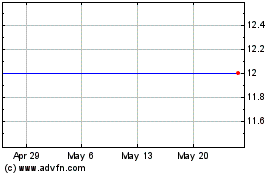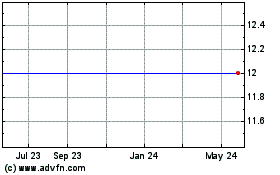The New Year is expected to be a happy beginning for generic
companies like Teva Pharmaceuticals (TEVA),
Mylan, Inc. (MYL), Watson Pharma
(WPI), Dr. Reddy’s (RDY) and Sandoz, the generic
arm of Novartis (NVS). A large number of
high-value branded pharmaceuticals have begun to go off-patent, and
many more will lose patent exclusivity in the next few years.
Major revenue generating blockbuster medicines like
Pfizer’s (PFE) cholesterol drug Lipitor,
Eli Lily’s (LLY) antipsychotic drug Zyprexa and
Johnson & Johnson’s (JNJ) Levaquin lost patent
exclusivity in the US in November, October and June of this year,
respectively. While Teva and Dr. Reddy’s have launched their
generic version of Zyprexa, India’s largest generic maker Ranbaxy
Laboratories Ltd. has launched a generic of Lipitor in partnership
with Teva. Watson has launched the authorized generic version of
Lipitor.
Generics Coming Home to Roost
Further, in the 2012-2018 timeframe, many more blockbuster drugs
are expected to lose patent protection in the US. Important among
these are: Forest Laboratories’ (FRX) depression
drug Lexapro (March 2012), Bristol-Myers
Squibb/Sanofi’s (BMY/SNY) hypertension
drug Avapro (March 2012) and blood thinner Plavix (May 2012), Swiss
drug maker Novartis’ (NVS) hypertension drug
Diovan (September 2012), Merck’s (MRK) asthma drug
Singulair (August 2012), Pfizer’s erectile dysfunction drug Viagra
(2012), Abbott Laboratories’ (ABT) dyslipidemia
drug TriCor (mid-2012), Eli Lily’s depression drug Cymbalta (2013)
and diabetes product Humalog (2013), Teva’s multiple sclerosis drug
Copaxone (2014), Forest’s Alzheimer’s drug Namenda (early 2015) and
Pfizer’s central nervous system drug Lyrica (2018).
The generic makers with a robust pipeline are sure to exploit
the patent cliff overhanging the pharma industry, especially with
so many blockbuster branded medicines slated to lose patent
protection in 2012, the year stands out as a beacon for these
companies with a slew of product launches already lined up.
Important 2012 US generic launches for Mylan include Provigil,
Diovan, Zyprexa, Plavix, Actos/Actoplus, Viramune, Clarinex,
Singulair and Avapro. Teva, another force in the generic space, has
drugs like Avandia, Avandamet, and Avandaryl, Actos/Actoplus and
Entocort EC ready for 2012 launch while Watson has Xopenex.
Further, the industry stands to gain from an increasing
awareness of generic products. Given the uncertain economic
outlook, various government agencies as well as privately managed
care organizations are taking initiatives to promote generics in
place of costlier branded treatments.
These factors, together with an aging population and a
corresponding increase in healthcare costs, should lead to
continued expansion of the generics marketplace. Besides, US
healthcare reform that works at bringing more people under the
purview of prescription drug benefit would catalyze generics
uptake.
Data from IMS Health substantiate that the growth rate of
generics is twice that of branded drugs the world over. In Europe,
too, generics make up almost half of total volume sales.
Big Pharma in the Pale
While the generic companies are expected to shine going ahead,
large pharmaceutical players like Pfizer, Eli Lilly, Merck, Forest,
Johnson & Johnson and Bristol Myers would have a tough time in
the coming years. Obviously, one’s gain is another’s loss. The loss
of patent exclusivity for these biggies would definitely affect
their top line.
The influx of generic competition will not only put downward
pressure on pricing, it will also result in gross margin
contraction over the next several years. At the same time, the loss
of revenues due to genericization is unlikely to be compensated
sufficiently by new product launches for most of these branded
companies. The extent to which branded companies can replace lost
sales, from generic lapses, by new product launches is still to be
seen.
Reliable data from IMS Health reveal that market share for
branded medicines fell from 70% in 2005 to 64% in 2010, a function
surely due to sour economic conditions. The percentage is expected
to deteriorate further, to 53%, through 2015.
Beyond the Bubble
With success guaranteed till 2017-2018, the question for
investors is what lies beyond. With most large branded drugs due to
lose patent exclusivity within 2017-2018, we have little visibility
into the growth prospects for generic companies beyond that
timeframe.
Moreover, large pharmaceutical players are not willing to take
the blows lying down. These well-capitalized companies are
continuously launching new products, entering into in-licensing
deals and indulging in tuck-in acquisitions.
These companies are also undertaking measures like work force
reduction and share repurchases to shore up the bottom line. The
last laugh may well be theirs. Meanwhile, generic players are
geared up to make the best use of the current favorable market
conditions.
ABBOTT LABS (ABT): Free Stock Analysis Report
BRISTOL-MYERS (BMY): Free Stock Analysis Report
FOREST LABS A (FRX): Free Stock Analysis Report
JOHNSON & JOHNS (JNJ): Free Stock Analysis Report
LILLY ELI & CO (LLY): Free Stock Analysis Report
MERCK & CO INC (MRK): Free Stock Analysis Report
MYLAN INC (MYL): Free Stock Analysis Report
NOVARTIS AG-ADR (NVS): Free Stock Analysis Report
PFIZER INC (PFE): Free Stock Analysis Report
DOCTOR REDDYS (RDY): Free Stock Analysis Report
SANOFI-AVENTIS (SNY): Free Stock Analysis Report
TEVA PHARM ADR (TEVA): Free Stock Analysis Report
WATSON PHARMA (WPI): Free Stock Analysis Report
To read this article on Zacks.com click here.
Zacks Investment Research
Forest Road Acquisition (NYSE:FRX)
Historical Stock Chart
From Jun 2024 to Jul 2024

Forest Road Acquisition (NYSE:FRX)
Historical Stock Chart
From Jul 2023 to Jul 2024
